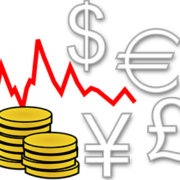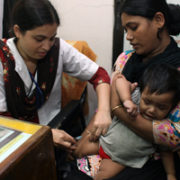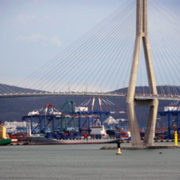Information and Communications Technology
 Energy
Energy
 Economics
Economics
 Economics
Economics
 Energy
Energy
 Finance sector development
Finance sector development
 Health
Health
 Economics, Finance sector development
Economics, Finance sector development
 Industry and trade
Industry and trade
 Economics
Economics

Going digital in the Pacific: lessons from Samoa’s online firms

More than ever before, Pacific firms are moving online. Will this increase e-commerce? This online activity is particularly good news in 2016, as the Pacific has witnessed an 8.2% jump in tourism arrivals. According to Pacific niche exporters, tourists constitute the majority of their overseas customers, often by visiting the seller’s website after they return home to seek out more information or re-order souvenirs.
Belling the cat: financing solar renewable energy projects

World energy demand is forecasted to grow by nearly one-third between 2015 and 2040. A large share of this increase will be from the power sector, and the global demand for electricity is likely to increase by more than 70%, leading to a 16% increase in energy-related carbon dioxide (CO2) emissions by 2040. Despite the diplomatic success of the Conference of the Parties (COP) 21, it is clear that the current pledges by various countries in the form of Nationally Determined Contributions fall way short of the “well below 2-degrees Celsius” goal agreed to by world leaders in Paris.
Implications of negative interest rates for Asia

The ultra-low and negative interest rate environment in advanced economies and its implications for the rest of the world are currently among the top concerns of financial market participants and policy makers worldwide. Mark Carney, the governor of the Bank of England, recently said the low interest rate equilibrium is one of the challenges that the global economy risks becoming trapped in. The phenomenon started when the central banks of the eurozone, Switzerland, Sweden, and Denmark adopted negative interest rates from mid-2014 to early 2015. Japan followed in January 2016 and Hungary was the first emerging market to introduce negative rates in March 2016.
Spillover effects of Japan’s unconventional monetary policy on emerging Asia

Like other central banks in advanced countries, the Bank of Japan (BOJ) adopted an unconventional monetary policy after the 2007–2009 global financial crisis (GFC). After Prime Minister Abe advocated the new policy regime, Abenomics, the BOJ became highly aggressive in its unconventional policy (see, for example, Fukuda [2015] for details). On 4 April 2013, BOJ Governor Kuroda introduced quantitative and qualitative monetary easing (QQE) and committed to achieve a 2% inflation target in 2 years.
Decline of oil prices and the negative interest rate policy in Japan

In February 2016, the Bank of Japan (BOJ), in order to reach a 2% inflation target, initiated a negative interest rate policy by increasing massive money supply through the purchase of long-term Japanese government bonds (JGBs). This policy flattened the yield curve of JGBs. Banks started to purchase government bonds less frequently, because of the negative yield for both short-term government bonds and even for long-term government bonds up to 15 years. On the other hand, a vertical investment–savings curve in the Japanese economy prevented the growth of corporate bank loans. Except for a few periods, the 2% inflation target could not be achieved. This paper examines this phenomenon, presents the reasons behind it, and offers solutions.
The institutionalization of the credit surety fund in the Philippines

The local business community is upbeat with the passing into law of Republic Act 10744, otherwise known as the Credit Surety Fund Cooperative Act of 2015 on 6 February 2016. Essentially, the said law provides for the creation and organization of the Credit Surety Fund (CSF) cooperatives to manage and administer credit surety funds and to enhance the accessibility of micro, small, and medium-sized enterprises (MSMEs); cooperatives; and nongovernment organizations (NGOs) to bank credit facilities.
Innovation in health care in South Asia

The countries comprising the South Asian Association for Regional Cooperation (SAARC) region (India, Pakistan, Bangladesh, Nepal, Bhutan, Afghanistan, Sri Lanka, and the Maldives) commonly known as South Asia face serious healthcare affordability and accessibility challenges. According to World Bank national estimates, South Asian countries houses more than 390 million poor people and a very significant percentage of total population lies below national poverty line (Figure 1). This large number of population is quite unlikely to afford private healthcare services and heavily dependent on the public healthcare facilities.
Does internal and external research and development affect innovation of small and medium-sized enterprises? Evidence from India and Pakistan

Small and medium-sized enterprises (SMEs) play a vital role in the economic growth of a country. Specifically, in developing countries where poverty, unemployment, low income per capita, low literacy rate, and high inflation and interest rates can hinder economic growth, SMEs contribute significantly to the national income and provide employment opportunities (Moktan 2007). However, SMEs have low survival rates than large firms because of resource constraints.
What can we learn from the trade and growth nexus in the Republic of Korea?

Since trade started being emphasized as a locomotive of growth, export promotion trade policies have become a popular option for countries in search of higher economic growth rates. East Asian countries in particular have witnessed a distinct success in terms of rapid economic growth after the adoption of outward-looking trade policies.
Some knowledge economy lessons from the Republic of Korea for Africa

Twenty-first century competition is centered on the knowledge economy, with Europe and North America inexorably charting the course of development in the international arena. In calculated steps, Latin America and Asia have been asserting the need for enhanced knowledge economy strategies in their own pursuits of national and regional development.


Search
Subscribe / Connect to Asia Pathways
Subjects
- Agriculture and natural resources
- Blog
- Capacity development
- Climate change
- Economics
- Education
- Energy
- Environment
- Finance sector development
- Gender
- Governance and public sector management
- Health
- Industry and trade
- Information and Communications Technology
- Infrastructure
- Miscellaneous
- Population
- Poverty
- Private sector development
- Regional cooperation and integration
- Sanitation
- Social development and protection
- Transport
- Uncategorized
- Urban development
- Video Blog
- Water
Recent Posts
- Artificial intelligence: A new driver for inclusive growth and development?
- Increasing trust in cross-border e-commerce and artificial intelligence
- Enhancing access to maternal and newborn healthcare in developing Asia
- Can electric vehicles lead the way to a sustainable future?
- Mitigating climate-related sovereign risk to accelerate action on the climate emergency




Recent Comments